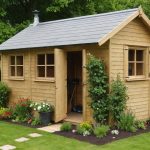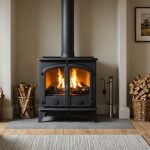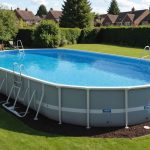Minimizing Noise Pollution in Your Central London Apartment: Top 10 Effective Ways
Living in Central London can be a thrilling experience, but it often comes with the downside of noise pollution. Whether it’s the constant hum of traffic, the chatter of noisy neighbours, or the clatter of construction work, noise can significantly impact your quality of life. Here are the top 10 effective ways to minimize noise pollution in your Central London apartment, ensuring you can enjoy a quieter and more comfortable home.
Understanding Noise Pollution
Before we dive into the solutions, it’s essential to understand what noise pollution is and how it affects us. Noise pollution is the excessive and unwanted sound that can disrupt our daily lives, causing stress, sleep disturbances, and even health issues. In a bustling city like London, it’s crucial to take proactive steps to reduce noise levels in your home.
A lire aussi : Essential Tips for Constructing a Fire-Resistant Garden Shed in the Scenic Countryside of Wales
1. Soundproofing Your Windows
Windows are one of the most significant entry points for noise into your home. Here are some ways to soundproof your windows:
Acoustic Glazing
- Double or Triple Glazing: Installing double or triple-glazed windows can significantly reduce noise levels. This involves adding an extra pane of glass with a gap in between, which acts as a sound barrier.
- Secondary Glazing: If replacing your windows is not feasible, consider secondary glazing. This involves installing a second pane of glass or acrylic on the inside of your existing window.
Window Seals
- Weatherstripping: Ensure that there are no gaps around your windows by using weatherstripping. This can be applied around the edges of the window frame to seal any air gaps.
- Window Inserts: Window inserts are clear panels that fit into your existing window frame, providing an additional layer of sound insulation.
| Method | Cost | Effectiveness |
|
|---------------|
|
| Double Glazing | High | Very Effective |
| Secondary Glazing | Medium | Effective |
| Weatherstripping | Low | Moderately Effective |
| Window Inserts | Medium | Effective |
2. Soundproofing Your Doors
Doors, especially if they are not solid or have gaps, can let a lot of noise in. Here’s how you can soundproof your doors:
A lire également : Essential Factors to Consider When Selecting a Wood Burner Stove for Your Norfolk Cottage
Solid Core or Solid Wood Doors
- Replace hollow doors with solid core or solid wood doors. These are much better at reducing noise.
Door Seals
- Door Sweeps: A door sweep is a rubber or vinyl piece attached to the bottom of the door that seals the gap between the door and the floor.
- Threshold Seals: Apply threshold seals to the bottom of the door frame to seal any gaps.
- Weatherstripping: Use weatherstripping around the edges of the door frame to ensure a tight seal.
Door Gaskets
- Automatic Door Bottoms: These are spring-loaded devices that seal the gap between the door and the floor when the door is closed.
| Method | Cost | Effectiveness |
|
|---------------|
|
| Solid Core Doors | High | Very Effective |
| Door Sweeps | Low | Moderately Effective |
| Threshold Seals | Low | Moderately Effective |
| Weatherstripping | Low | Moderately Effective |
| Automatic Door Bottoms | Medium | Effective |
3. Insulating Your Walls
Walls are another critical area to focus on when it comes to soundproofing. Here are some methods to insulate your walls:
Mass Loaded Vinyl
- Apply mass loaded vinyl to your walls. This is a flexible sheet loaded with heavy metal particles that absorb sound energy.
Acoustic Panels
- Use acoustic panels on your walls. These panels absorb sound waves, reducing echo and reverberation.
Soundproofing Blankets
- Hang soundproofing blankets on your walls. These blankets are designed to absorb sound and can be especially useful in rooms with a lot of echo.
| Method | Cost | Effectiveness |
|
|---------------|
|
| Mass Loaded Vinyl | Medium | Effective |
| Acoustic Panels | Medium | Effective |
| Soundproofing Blankets | Low | Moderately Effective |
4. Sealing Air Gaps
Air gaps around windows, doors, and other openings can let noise in. Here’s how to seal them:
Caulk and Spray Foam
- Use caulk or spray foam to fill gaps around windows and doors.
- Acoustic Sealants: Use acoustic sealants, which are specifically designed to block sound.
Weatherstripping
- Apply weatherstripping around doors and windows to ensure a tight seal.
| Method | Cost | Effectiveness |
|
|---------------|
|
| Caulk | Low | Moderately Effective |
| Spray Foam | Low | Moderately Effective |
| Acoustic Sealants | Medium | Effective |
| Weatherstripping | Low | Moderately Effective |
5. Soundproofing Your Floor
Floors can also be a source of noise, especially if you live in an apartment building. Here are some ways to soundproof your floor:
Area Rugs and Underlayment
- Use thick area rugs and underlayment to reduce footfall noise.
- Mass Loaded Vinyl: Apply mass loaded vinyl to your floor for added sound insulation.
Floating Floors
- Install a floating floor, which involves placing a new floor surface over the existing one with a gap in between. This gap acts as a sound barrier.
| Method | Cost | Effectiveness |
|
|---------------|
|
| Area Rugs and Underlayment | Low | Moderately Effective |
| Mass Loaded Vinyl | Medium | Effective |
| Floating Floors | High | Very Effective |
6. Creating a Soundproof Room
If you need a completely quiet space, consider creating a soundproof room:
Decoupling
- Decouple the walls, floor, and ceiling from the main structure of the building. This involves using resilient channels to separate the drywall from the studs.
Double Drywall
- Use double drywall with a gap in between. This adds an extra layer of sound insulation.
Sealing Gaps
- Ensure all gaps around the room are sealed with acoustic sealants.
| Method | Cost | Effectiveness |
|
|---------------|
|
| Decoupling | High | Very Effective |
| Double Drywall | High | Very Effective |
| Sealing Gaps | Medium | Effective |
7. Using White Noise Machines
White noise machines can help mask background noise, making your home feel quieter:
Types of White Noise
- Fan Noise: Some machines mimic the sound of a fan.
- Rainfall: Others mimic the sound of rainfall.
- Ocean Waves: Some machines produce the sound of ocean waves.
| Type | Cost | Effectiveness |
|
|---------------|
|
| Fan Noise | Low | Moderately Effective |
| Rainfall | Low | Moderately Effective |
| Ocean Waves | Low | Moderately Effective |
8. Planning Permission and Neighbourly Considerations
When making significant changes to your property, it’s important to consider planning permission and the impact on your neighbours:
Planning Permission
- Check with your local council to see if any of your soundproofing plans require planning permission.
Neighbourly Considerations
- Inform your neighbours about your plans and ensure that your soundproofing measures do not infringe on their rights or cause them undue disturbance.
9. Professional Installation
While many soundproofing measures can be DIY, some may require professional installation:
Hiring a Professional
- For complex tasks like installing soundproof windows or decoupling walls, it may be best to hire a professional.
- Quotes and Comparisons: Get multiple quotes and compare services to ensure you find the best option for your needs.
| Service | Cost | Effectiveness |
|
|---------------|
|
| Professional Installation | High | Very Effective |
| DIY | Low-Medium | Moderately Effective |
10. Maintenance and Regular Checks
Finally, regular maintenance and checks are crucial to ensuring your soundproofing measures remain effective:
Regular Inspections
- Regularly inspect your windows, doors, and walls for any gaps or damage.
- Replace Sealants: Replace old sealants and weatherstripping as needed.
Upkeep of Soundproofing Materials
- Ensure that any soundproofing materials, such as acoustic panels or mass loaded vinyl, are in good condition.
| Task | Frequency | Importance |
|
|---------------|
|
| Regular Inspections | Monthly | High |
| Replace Sealants | As Needed | High |
| Upkeep of Materials | Quarterly | Medium |
Minimizing noise pollution in your Central London apartment is a multifaceted task that requires a combination of the right materials, techniques, and maintenance. By soundproofing your windows, doors, walls, and floors, using white noise machines, and ensuring regular maintenance, you can create a quieter and more comfortable home.
As Claire Schorter, the 2024 Grand Prix de l’urbanisme winner, emphasizes, “The key to successful urban planning is not just about building structures, but also about creating livable spaces that respect the well-being of their inhabitants”[3].
By following these top 10 effective ways to minimize noise pollution, you can transform your home into a quiet haven in the heart of the city. Remember, a quiet home is not just a luxury; it’s a necessity for your mental and physical well-being. So, take the first step today and make your home a quieter, more peaceful place to live.
Window Treatments for Noise Reduction
Reducing noise in your home can greatly enhance comfort and privacy. One effective solution is the use of noise-reducing curtains. These curtains are designed with dense and often multiple layers of fabric to absorb sound, acting as a sound barrier that prevents noise from penetrating through windows. Not only do they help in diminishing unwanted noise, but they also add to the aesthetic of a room, making them a practical and stylish option.
When it comes to window treatments, there are several options for window soundproofing. A common choice is double glazing, which involves installing two layers of glass with a small gap in between. This gap serves as an insulator, dramatically cutting down noise transmission through windows. Double glazing is particularly effective in urban environments where external noise levels are high. Compared to single-pane windows, double glazing can reduce noise by up to 50%, offering a more serene indoor atmosphere.
In comparison to other treatments, both noise-reducing curtains and double glazing present significant benefits. While noise-reducing curtains are cost-effective and easy to install, double glazing provides a more permanent and substantial solution. Together, they can work in harmony to create a quieter, peaceful living space.











